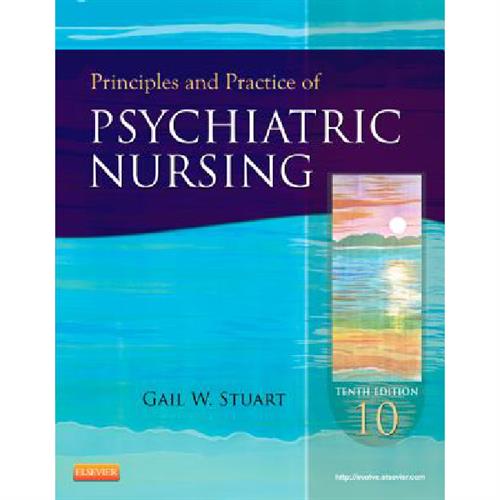The Healthy Indoor Environment : How to assess occupants' wellbeing in buildings
9781032099088
-
₪289.00₪318.00
אזל המלאי
פריט זה ניתן על ידי קרדיטים.
לחצו על "הוספה לעגלה" להמשך
לחצו על "הוספה לעגלה" להמשך
אזל המלאי עבור /
-
זמן אספקה ותנאי רכישההערות:
• זמן אספקה: הזמנות בהן כל הספרים זמינים במלאי - זמן אספקה – כ- 5 ימי עסקים (למעט אזורים חריגים בהם ייתכן עיכוב נוסף).
ספרים שאינם זמינים במלאי: זמן אספקה כ- 14 -30 ימי עסקים בהתאם למלאי במחסני המו"ל בחו"ל - הודעה תימסר ללקוח.
• הזמנה במשקל כולל של עד 14 קילו ישלחו ללקוח באמצעות חברת שליחויות עם שליח עד הבית (בישובים מסוימים המסירה תתבצע למרכז חלוקת הדואר המקומי)
• במידה וקיים עיכוב במשלוח ההזמנה או חוסר במלאי הספרים תשלח הודעה ללקוח.
• במידה ויבחר הלקוח עקב עיכוב במשלוח כנ"ל לבטל הזמנתו ויודיע על כך לידע, ידע מתחייבת לזכות החיוב.
• במידה ויתברר כי הספרים אזלו מהמלאי ולא ניתן לספקם - תשלח הודעה ללקוח.
• האיסוף העצמי ממשרדי ידע יבוצע רק לאחר הודעה ללקוח שההזמנה מוכנה לאיסוף.
דמי משלוח:
ניתן לבחור: 1. איסוף עצמי - ללא תשלום
2. משלוח עד הבית
The Healthy Indoor Environment : How to assess occupants' wellbeing in buildings/ Philomena M. Bluyssen
2021
Despite policy directives, standards and guidelines, indoor environmental quality is still poor in many cases. The Healthy Indoor Environment, winner of the 2016 IDEC Book Award, aims to help architects, building engineers and anyone concerned with the wellbeing of building occupants to better understand the effects of spending time in buildings on health and comfort. In three clear parts dedicated to mechanisms, assessment and analysis, the book looks at different indoor stressors and their effects on wellbeing in a variety of scenarios with a range of tools and methods.
The book supports a more holistic way of evaluating indoor environments and argues that a clear understanding of how the human body and mind receive, perceive and respond to indoor conditions is needed. At the national, European and worldwide level, it is acknowledged that a healthy and comfortable indoor environment is important both for the quality of life, now and in the future, and for the creation of truly sustainable buildings. Moreover, current methods of risk assessment are no longer adequate: a different view on indoor environment is required.
Highly illustrated and full of practical examples, the book makes recommendations for future procedures for investigating indoor environmental quality based on an interdisciplinary understanding of the mechanisms of responses to stressors. It forms the basis for the development of an integrated approach towards assessment of indoor environmental quality.
2021
Despite policy directives, standards and guidelines, indoor environmental quality is still poor in many cases. The Healthy Indoor Environment, winner of the 2016 IDEC Book Award, aims to help architects, building engineers and anyone concerned with the wellbeing of building occupants to better understand the effects of spending time in buildings on health and comfort. In three clear parts dedicated to mechanisms, assessment and analysis, the book looks at different indoor stressors and their effects on wellbeing in a variety of scenarios with a range of tools and methods.
The book supports a more holistic way of evaluating indoor environments and argues that a clear understanding of how the human body and mind receive, perceive and respond to indoor conditions is needed. At the national, European and worldwide level, it is acknowledged that a healthy and comfortable indoor environment is important both for the quality of life, now and in the future, and for the creation of truly sustainable buildings. Moreover, current methods of risk assessment are no longer adequate: a different view on indoor environment is required.
Highly illustrated and full of practical examples, the book makes recommendations for future procedures for investigating indoor environmental quality based on an interdisciplinary understanding of the mechanisms of responses to stressors. It forms the basis for the development of an integrated approach towards assessment of indoor environmental quality.
מוצרים קשורים
-
יח'יח'יח'יח'
תודה על השיתוף
קיבלתם הנחת שיתוף מיוחדת! על מנת להינות מהנחה זו עליכם להוסיף את הפריט לעגלת הקניות בכפתור הוספה לעגלה.
הצטרפו לרשימת המתנה לחזרה למלאי
הצטרפות לרשימת ההמתנה בוצעה בהצלחה.
אנו נשלח אליכם מייל כאשר הפריט יחזור למלאי.






.png)